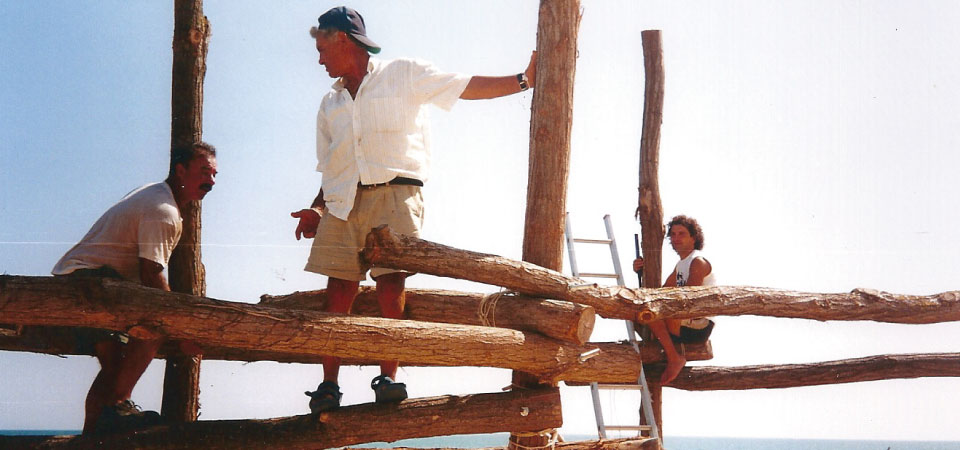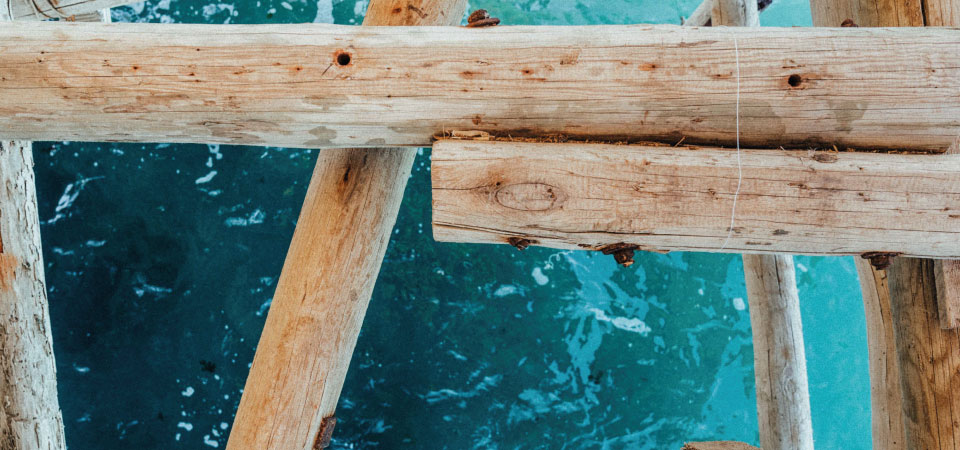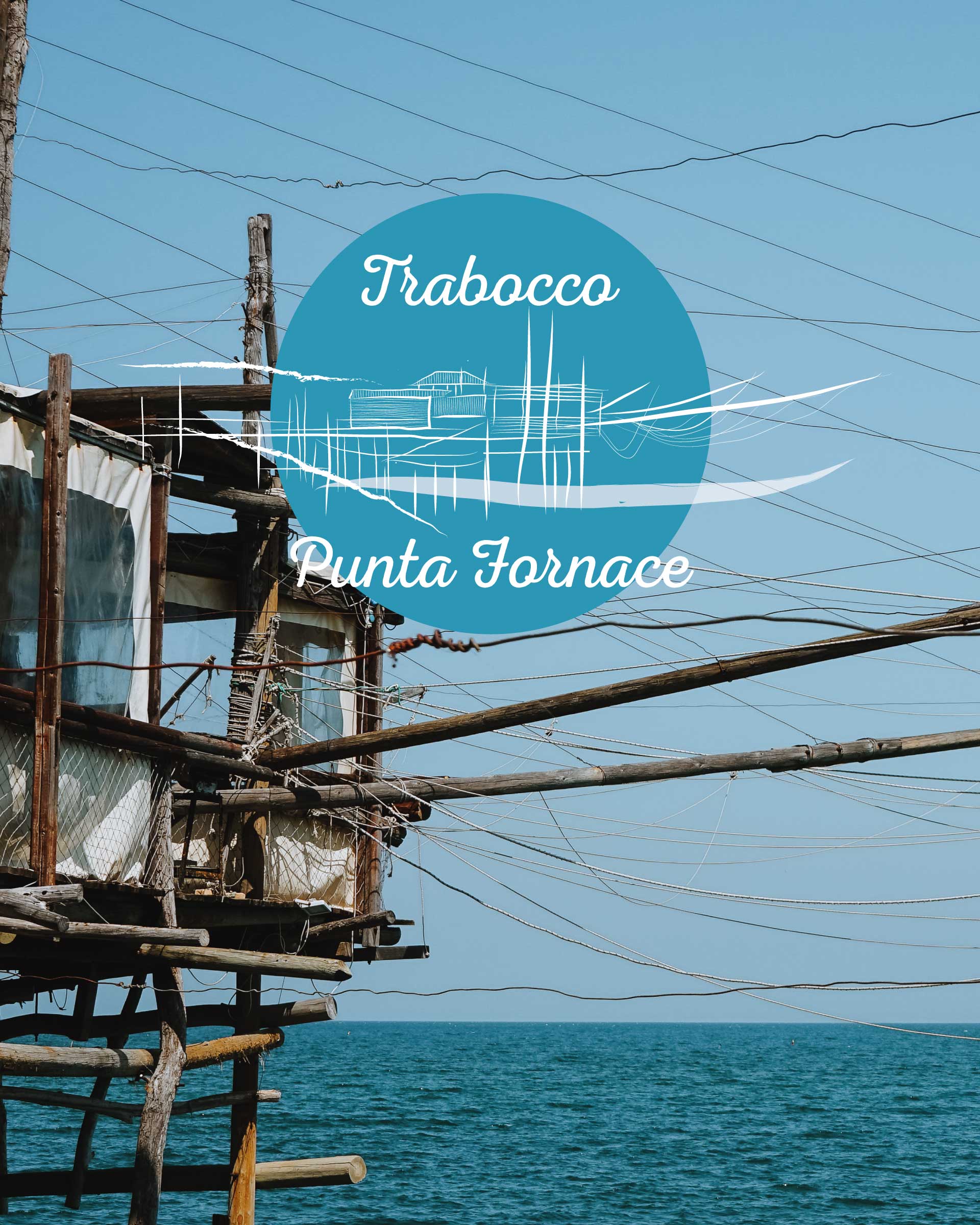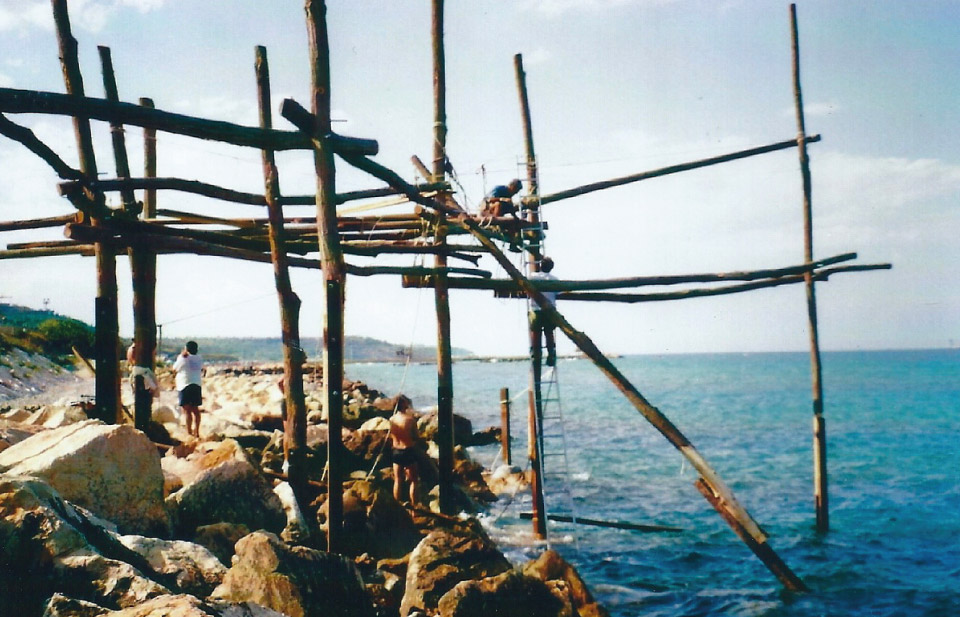

A story of ropes and wood in harmony
with the sea
It leans towards the sea, watches over it, like a silent guardian, preserving the stories of the families of fishermen in the area who used these “fishing machines”.
“A strange fishing machine, all made up of boards and beams, like a colossal spider. Jutting out from the rocks, like a lurking monster, with its hundred limbs the Trabocco had a formidable appearance” (Gabriele d’Annunzio, Il trionfo della morte, 1894).

A story of ropes and wood in harmony
with the sea
It leans towards the sea, watches over it, like a silent guardian, preserving the stories of the families of fishermen in the area who used these “fishing machines”.
“A strange fishing machine, all made up of boards and beams, like a colossal spider. Jutting out from the rocks, like a lurking monster, with its hundred limbs the Trabocco had a formidable appearance” (Gabriele d’Annunzio, Il trionfo della morte, 1894).

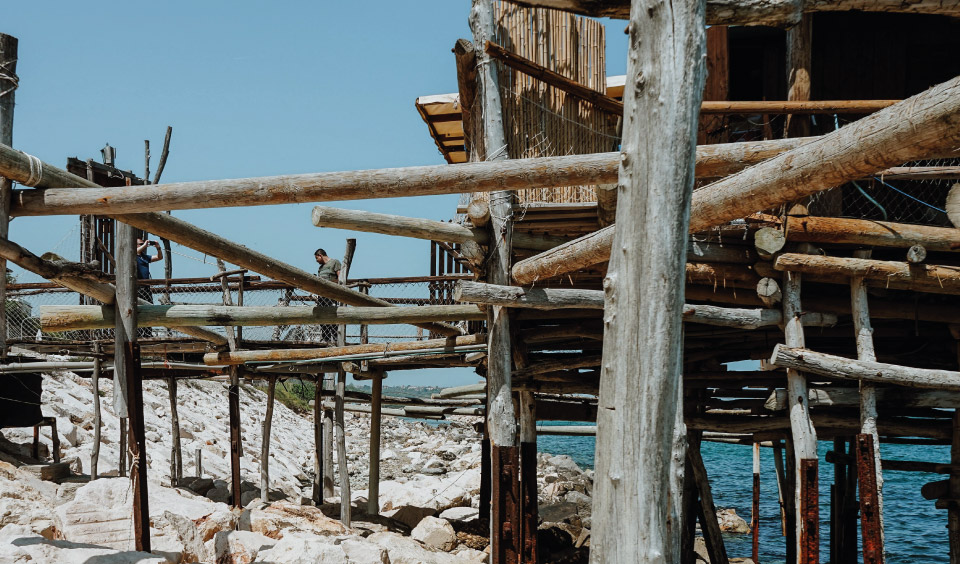
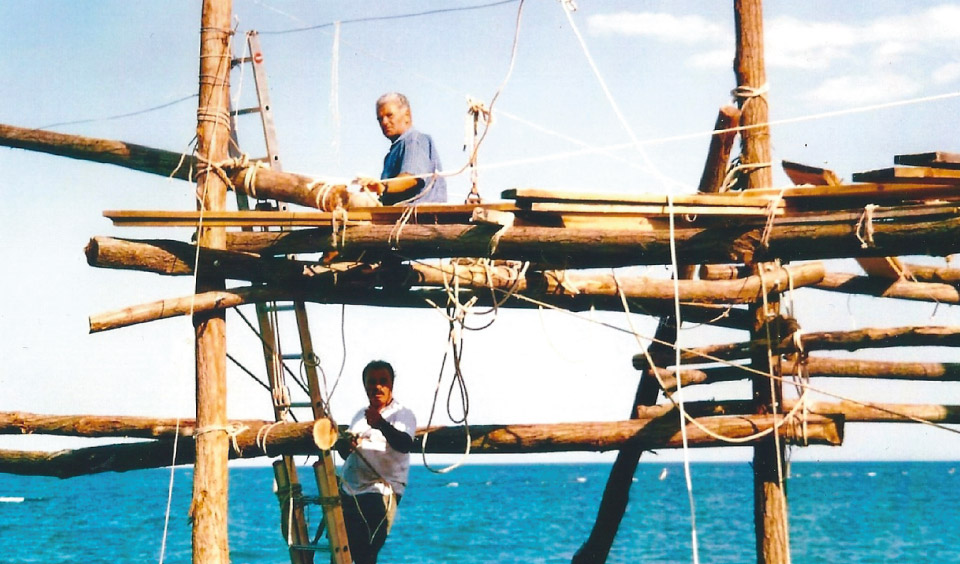

“… What do these “Trabocchi”, surprised in their lyrical charm, tell us at last? That human work is always cumbersome and fragile, a breath is enough to destroy it. But precisely its fragility is also the reason for its resistance: a little above the waves, a little below the clouds, the “great fishing machine” symbolizes the pathetic yet grandiose capacity of the human being to believe in the future despite the bitterness and the littleness of his destiny “. Dacia Maraini
